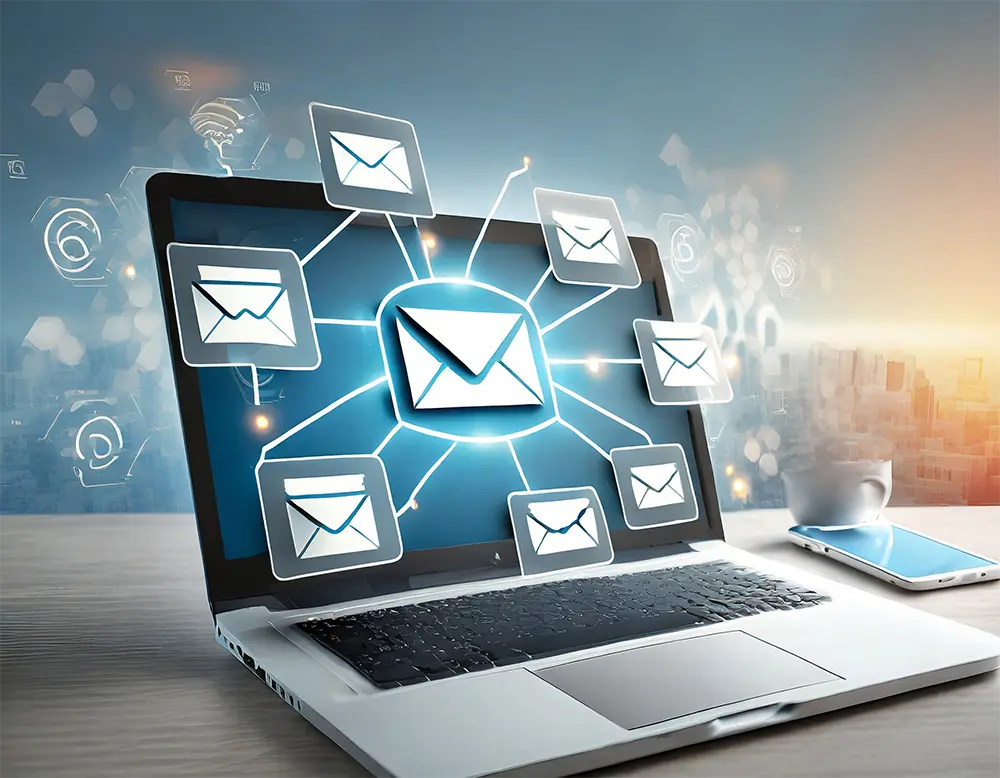Email Marketing Automation: Streamlining Your Campaigns
- Digital Marketing

email marketing remains one of the most effective strategies for businesses to connect with their audience and drive conversions. However, manually managing email campaigns can be time-consuming and inefficient. That’s where email marketing automation comes in. By implementing automated workflows and systems, businesses can streamline their email marketing efforts, save time, and boost their overall marketing success. In this article, we will dive deep into the world of email marketing automation, exploring its benefits, best practices, and how to optimize your campaigns for maximum impact.
What is Email Marketing Automation?
Email marketing automation refers to the use of technology and predetermined workflows to send targeted and personalized emails to subscribers at specific intervals or based on specific triggers. Rather than manually sending individual emails, automation tools allow businesses to set up campaigns in advance, ensuring the right message reaches the right person at the right time. By leveraging automation, businesses can increase efficiency, improve engagement, and ultimately drive better results.
Benefits of Email Marketing Automation
- Time Savings: One of the primary advantages of email marketing automation is the time saved. By automating repetitive tasks, businesses can focus on other important aspects of their marketing strategy. This time-saving aspect enables marketers to work on more strategic initiatives or invest in creating high-quality content.
- Increased Personalization: Automation tools allow businesses to segment their subscribers based on various criteria, such as demographics, purchase history, or engagement level. This segmentation enables the delivery of highly personalized and relevant content, increasing the chances of conversion.
- Improved Engagement: Automation enables businesses to send targeted emails to subscribers based on their behavior or actions, such as abandoned carts or product views. These personalized messages are more likely to resonate with recipients and result in higher engagement rates.
- Optimized Timing: With automation, businesses can schedule emails to be sent at the most appropriate times for their audience. By analyzing data and understanding subscriber behavior, marketers can identify the optimal time to send emails, increasing the chances of them being opened and acted upon.
- Data-Driven Insights: Email marketing automation tools provide valuable data and analytics to measure the success of campaigns. Marketers can track open rates, click-through rates, conversions, and other key metrics to gain insights into what works and what needs improvement. This data-driven approach helps refine strategies for better results.
Best Practices for Email Marketing Automation
- Define Clear Goals: Before implementing email marketing automation, it’s essential to define clear goals and objectives. Identify what you want to achieve with your email campaigns, whether it’s lead generation, customer retention, or promoting a new product. Clear goals will guide your automation strategy and ensure alignment with your overall marketing objectives.
- Segment Your Audience: Segmenting your audience based on specific criteria allows for more targeted and personalized messaging. Divide your subscribers into different groups based on demographics, purchase history, engagement levels, or any other relevant factors. This segmentation will enable you to send highly relevant content and increase the chances of conversions.
- Craft Compelling Content: Content is the heart of any email campaign. Ensure your emails provide value, are well-written, and align with your audience’s needs and interests. Personalize your messages with the recipient’s name and make use of dynamic content to further enhance engagement. Remember to include a clear call-to-action that encourages recipients to take the desired action.
- Automate Triggered Emails: Triggered emails are automated messages that are sent based on specific triggers, such as a subscriber joining your list or abandoning a cart. These emails are highly effective, as they are timely and relevant. Set up trigger-based workflows to nurture leads, recover abandoned carts, or follow up with recent customers.
- Test and Analyze: Continuously test different elements of your email campaigns, including subject lines, content layout, and call-to-action buttons. A/B testing allows you to understand what resonates best with your audience and optimize your campaigns accordingly. Analyze the data from your email marketing automation tool to identify trends, patterns, and areas for improvement.
Common Mistakes to Avoid in Email Marketing Automation
While email marketing automation can greatly benefit your campaigns, there are certain mistakes that you should avoid to ensure optimal results. Here are some common pitfalls to watch out for:
- Neglecting List Hygiene: It’s crucial to regularly clean and update your email list. Remove inactive or unsubscribed users to maintain a healthy list and improve deliverability rates. Neglecting list hygiene can result in higher bounce rates and lower engagement.
- Over-automation: Automation is powerful, but it should be used strategically. Be mindful of over-automating your emails and bombarding subscribers with too many messages. Find the right balance between automation and human touch to maintain a genuine connection with your audience.
- Lack of Testing: Testing is a vital part of optimizing your email marketing campaigns. Don’t underestimate the importance of A/B testing different elements such as subject lines, call-to-action buttons, or content layout. Testing allows you to identify what resonates best with your audience and make data-driven decisions.
- Ignoring Analytics: Email marketing automation tools provide valuable analytics and insights. Don’t ignore this data! Regularly analyze metrics like open rates, click-through rates, and conversions to understand the effectiveness of your campaigns. Use these insights to fine-tune your strategies and improve your results.
- Forgetting the Human Touch: While automation streamlines your campaigns, it’s essential to maintain a personalized, human touch. Avoid generic or robotic-sounding emails by using dynamic content, personalization tokens, and thoughtful copywriting. Make your subscribers feel valued and build stronger relationships.
By avoiding these common mistakes, you can maximize the benefits of email marketing automation and create highly effective campaigns that engage and convert your audience.
Frequently Asked Questions (FAQ)
Email marketing automation can benefit your business in multiple ways. It saves time, increases personalization, improves engagement, optimizes timing, and provides data-driven insights to refine your marketing strategies.
A wide variety of emails can be automated, including welcome emails, abandoned cart reminders, post-purchase follow-ups, birthday emails, re-engagement campaigns, and more.
Segmentation can be based on demographics, purchase history, engagement level, geographic location, or any other relevant criteria. Analyze your data and identify segments that will benefit from personalized messaging.
To measure the success of your email marketing campaigns, track metrics such as open rates, click-through rates, conversion rates, bounce rates, unsubscribe rates, and revenue generated. These metrics will provide valuable insights into the effectiveness of your campaigns and help you make data-driven decisions for improvement.
While email marketing automation offers numerous benefits, there are some potential risks and challenges to consider. These include the risk of emails ending up in spam folders, the need to maintain a clean and updated email list, and the challenge of ensuring that automated emails maintain a personal touch and don’t feel robotic. It is important to regularly monitor and optimize your automation workflows to mitigate these risks.
Conclusion
Email marketing automation is a powerful tool that allows businesses to streamline their campaigns, save time, and boost their marketing success. By implementing best practices, such as defining clear goals, segmenting your audience, crafting compelling content, and analyzing data, you can optimize your email marketing automation for maximum impact. Remember, automation is not about replacing human interaction but enhancing it. It allows you to deliver personalized, timely, and relevant messages that resonate with your audience, ultimately driving conversions and building stronger relationships.
Ready to Talk and Learn How Clear Nexus Can Help your Business?
Discover all Clear Nexus BPO and Marketing solutions to skyrocket your business and reduce your operations costs.
